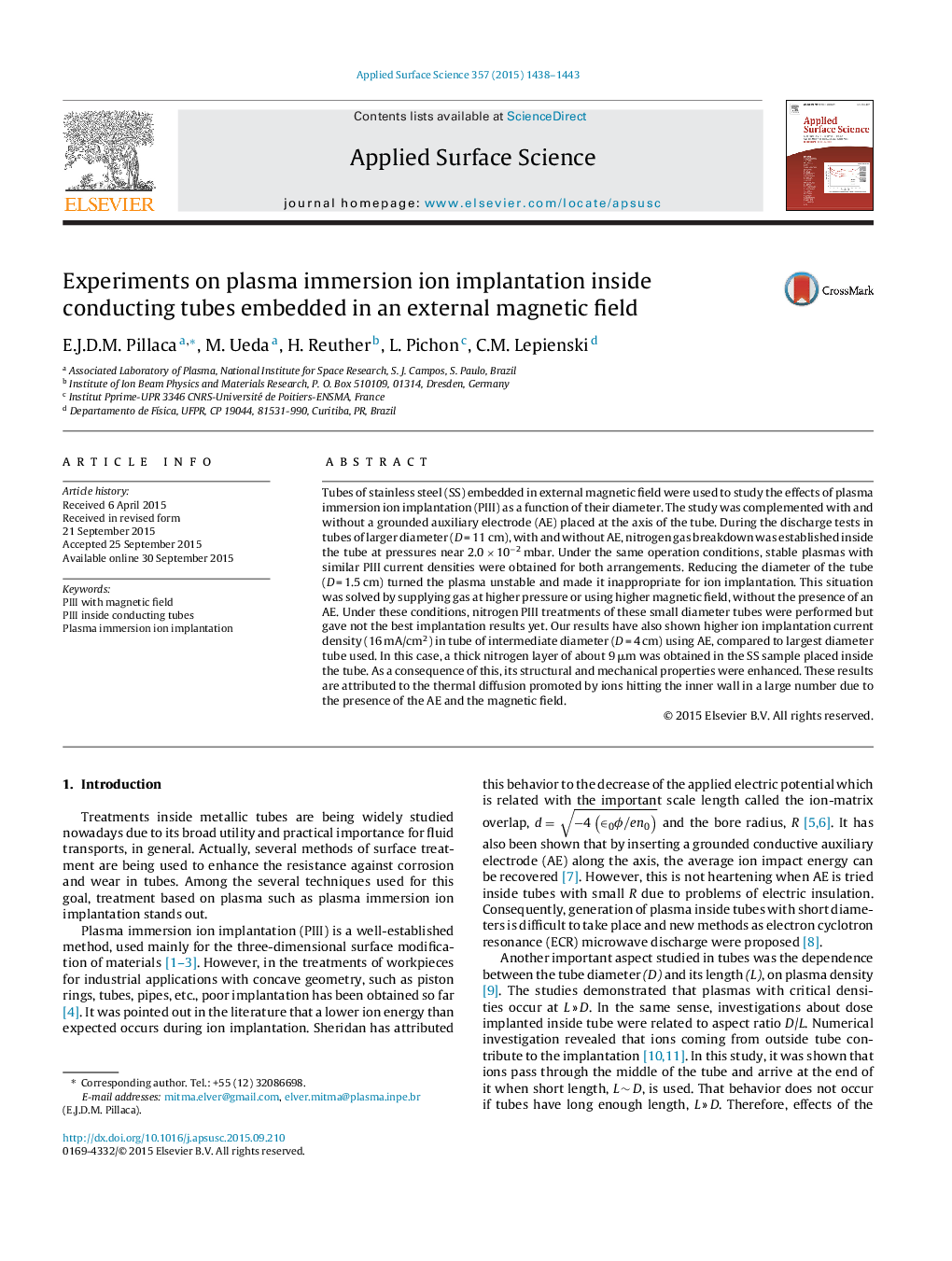| Article ID | Journal | Published Year | Pages | File Type |
|---|---|---|---|---|
| 5356222 | Applied Surface Science | 2015 | 6 Pages |
Abstract
Tubes of stainless steel (SS) embedded in external magnetic field were used to study the effects of plasma immersion ion implantation (PIII) as a function of their diameter. The study was complemented with and without a grounded auxiliary electrode (AE) placed at the axis of the tube. During the discharge tests in tubes of larger diameter (D = 11 cm), with and without AE, nitrogen gas breakdown was established inside the tube at pressures near 2.0 Ã 10â2 mbar. Under the same operation conditions, stable plasmas with similar PIII current densities were obtained for both arrangements. Reducing the diameter of the tube (D = 1.5 cm) turned the plasma unstable and made it inappropriate for ion implantation. This situation was solved by supplying gas at higher pressure or using higher magnetic field, without the presence of an AE. Under these conditions, nitrogen PIII treatments of these small diameter tubes were performed but gave not the best implantation results yet. Our results have also shown higher ion implantation current density (16 mA/cm2) in tube of intermediate diameter (D = 4 cm) using AE, compared to largest diameter tube used. In this case, a thick nitrogen layer of about 9 μm was obtained in the SS sample placed inside the tube. As a consequence of this, its structural and mechanical properties were enhanced. These results are attributed to the thermal diffusion promoted by ions hitting the inner wall in a large number due to the presence of the AE and the magnetic field.
Keywords
Related Topics
Physical Sciences and Engineering
Chemistry
Physical and Theoretical Chemistry
Authors
E.J.D.M. Pillaca, M. Ueda, H. Reuther, L. Pichon, C.M. Lepienski,
